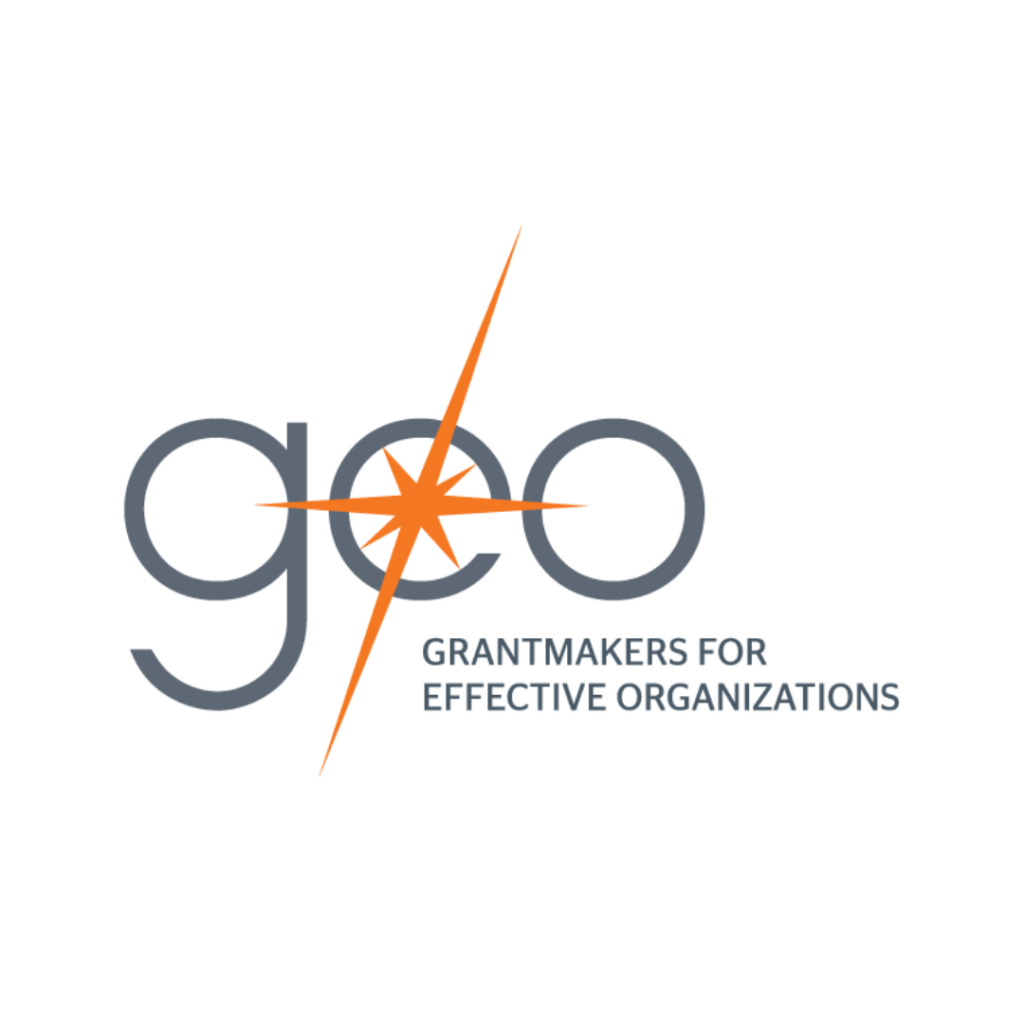GEO’s new publication, Centering Equity through Flexible, Reliable Funding, provides grantmakers with actionable tools and insights to move toward an equity-centered approach to funding nonprofits and communities.
This series features the perspectives and experiences of several GEO members and thought leaders in the philanthropic sector who reflect on reimagining the balance of power through flexible, reliable funding practices. While the benefits of flexible, reliable funding – such as general operating support and multiyear grants – are well documented, this series seeks to reassert the value of such practices with an updated analysis and examples to illustrate how a commitment to flexible funding can support the sector to be more equitable in practice and culture.
It is hard to talk about power without talking about race and racism. Whether in the halls of Congress or the halls of philanthropy, power in the United States is concentrated among white people and reflects the historical legacy of oppression that has diminished the contributions of BIPOC communities. If we are serious about addressing power imbalances in our sector, we must take a close look at how our grantmaking practices support (or exclude) BIPOC leaders.
An increasing body of data documents what many nonprofit BIPOC leaders have observed for years — that their organizations receive less funding than their white-led counterparts and that the funding they do receive tends to come with more restrictions. For example, data from Race to Lead, an initiative of the Building Movement Project, show that BIPOC-led organizations receive less funding than white-led organizations and, as a result, tend to be smaller and have fewer resources for communications, financial management, evaluation and learning, and so forth.
Looking at Black-led organizations specifically, an analysis of Echoing Green’s 2019 applicant pool found that 492 Black-led organizations raised $40 million compared with $61 million raised by 396 white-led organizations. In addition, revenues of Black-led groups were 24 percent lower than those of their white-led counterparts. The gap in unrestricted assets was much wider — 76 percent. “The stark disparity in unrestricted assets is particularly startling as such funding often represents a proxy for trust,” write the authors of the report. This dynamic is emblematic of “philanthropic redlining,” a term coined to describe the way that Black-led organizations are denied funding due to requirements for funding eligibility that are difficult for organizations to meet.
“I see too many other organizations out there that are really struggling to find the reliable, long-term grants.” -Lori Lea Pourier, First Peoples Fund
In its research, Echoing Green identifies four barriers leaders of color face in accessing capital that reflect a pattern of systemic bias: getting connected, building rapport, securing support and sustaining relationships. Collectively, those reasons highlight that predominantly white staff in philanthropy often have not nurtured deep relationships with nonprofit leaders of color in the community that are typically the basis for long-term funding relationships. Christina Livingston, statewide executive director of the Alliance of Californians for Community Empowerment Institute, says her organization has seen foundations reduce funding as it moved from a majority-white board of directors to one consisting mostly of people of color. “It does not feel like funders appreciate our wisdom in terms of tactics and what it means to truly empower people, and I have to put that down to implicit racism,” she said. First Peoples Fund president, Lori Lea Pourier notices the same dynamic among Native American-led nonprofits. “We’ve been lucky to develop those relationships within philanthropy, but it’s taken a lot of time and hard work,” says Pourier of her work at First Peoples Fund. “But I see too many other organizations out there that are really struggling to find the reliable, long-term grants they need to strengthen and sustain their organizations.”
In light of growing attention within the field of philanthropy to racial inequities and how they play out in the nonprofit and philanthropic sectors, a number of grantmakers are providing more flexible, reliable funding to people of color-led groups. Borealis Philanthropy, for example, launched its Black-Led Movement Fund in 2016 with the goal of providing general operating and capacity-building support to local groups affiliated with the Movement for Black Lives. Similarly, the Southern Power Fund distributes funding to small, grassroots organizations that are primarily Black led. The Ford Foundation, the JPB Foundation and others have contributed to the fund; not only are the grants flexible, but grantmaking decisions are made via a committee of movement leaders — those who are closest to the work.
GEO believes that ultimately effective philanthropy emerges out of transformational relationships between grantmakers and their nonprofit and community partners. For more strategies on how to center equity in funding practices, read our full publication here.

